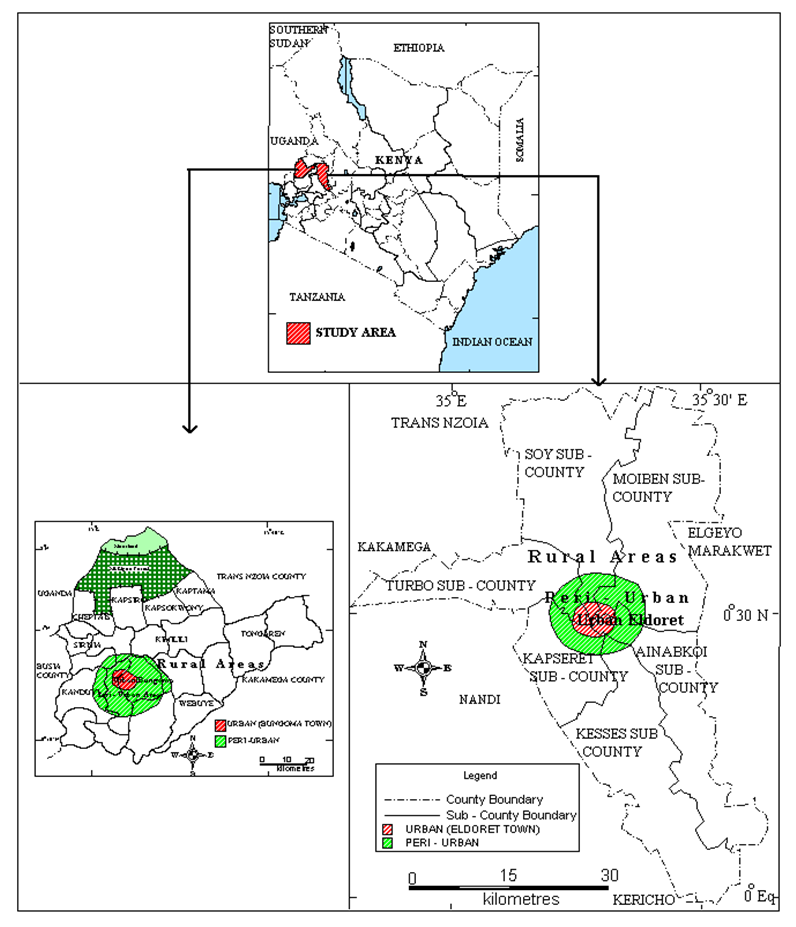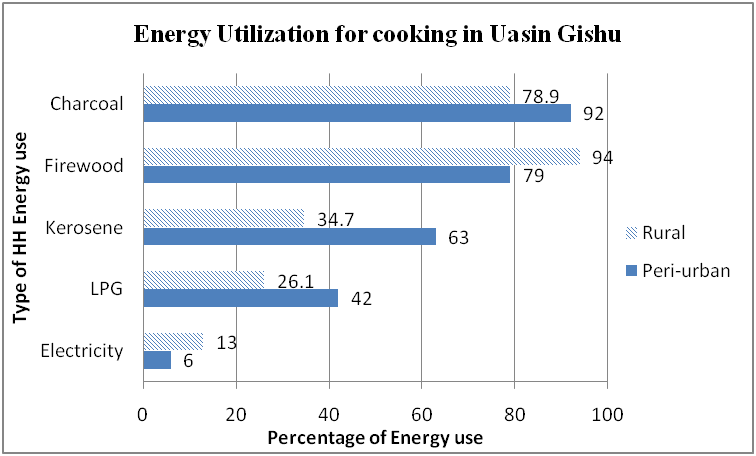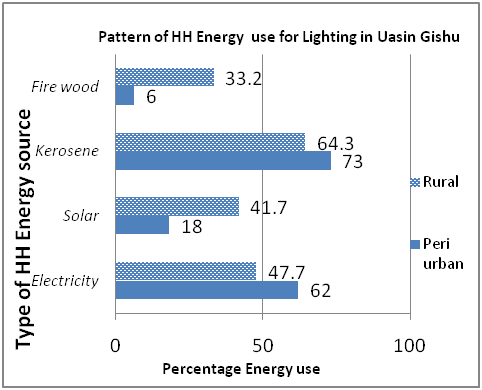| [1] | Unies, N. (2017). World population prospects: the 2015 revision: key findings and advance tables. UN. |
| [2] | AfDB, O. E. C. D. (2016). African economic outlook 2016: sustainable cities and structural transformation. In African development bank, organization for economic co-operation and development. United Nations Development Programme Tunis. |
| [3] | Karekezi, S., Kimani, J., & Onguru, O. (2008). Energy access among the urban poor in Kenya. Energy for Sustainable Development, 12(4), 38-48. |
| [4] | AfDB/OECD/UNDP. (2016). African Economic Outlook 2016: Sustainable Cities and Structural Transformation, OECD Publishing, Paris. |
| [5] | Duflo, E., Greenstone, M., & Hanna, R. (2008). Indoor air pollution, health and economic well-being. SAPI EN. S. Surveys and Perspectives Integrating Environment and Society, (1.1). |
| [6] | Fullerton, D. G., Bruce, N., & Gordon, S. B. (2008). Indoor air pollution from biomass fuel smoke is a major health concern in the developing world. Transactions of the Royal Society of Tropical Medicine and Hygiene, 102(9), 843-851. |
| [7] | Ezzati, M., & Kammen, D. M. (2001). Indoor air pollution from biomass combustion and acute respiratory infections in Kenya: an exposure-response study. The Lancet, 358(9282), 619-624. |
| [8] | Rahut, D. B., Ali, A., & Behera, B. (2017). Domestic use of dirty energy and its effects on human health: empirical evidence from Bhutan. International Journal of Sustainable Energy, 36(10), 983-993. |
| [9] | Idiata, D. J., Ebiogbe, M., Oriakhi, H., & Iyalekhue, H. (2013). Wood fuel usage and the challenges on the environment. International Journals of Engineering Sciences, 2, 110-114. |
| [10] | Rahut, D. B., Ali, A., & Behera, B. (2017). Domestic use of dirty energy and its effects on human health: empirical evidence from Bhutan. International Journal of Sustainable Energy, 36(10), 983-993. |
| [11] | Chuang, M. C., & Ma, H. W. (2013). Energy security and improvements in the function of diversity indices—Taiwan energy supply structure case study. Renewable and Sustainable Energy Reviews, 24, 9-20. |
| [12] | Arnold, M., Köhlin, G., Persson, R., & Shepherd, G. (2003). Fuelwood Revisited: What has changed in the last decade?. |
| [13] | Akpalu, W., Dasmani, I., & Aglobitse, P. B. (2011). Demand for cooking fuels in a developing country: To what extent do taste and preferences matter?. Energy Policy, 39(10), 6525-6531. |
| [14] | Ruiz-Mercado, I., & Masera, O. (2015). Patterns of stove use in the context of fuel–device stacking: rationale and implications. EcoHealth, 12(1), 42-56. |
| [15] | Burger, P., Bezençon, V., Bornemann, B., Brosch, T., Carabias-Hütter, V., Farsi, M., ... & Sander, D. (2015). Advances in understanding energy consumption behavior and the governance of its change–outline of an integrated framework. Frontiers in energy research, 3, 29. |
| [16] | Louw, K., Conradie, B., Howells, M., & Dekenah, M. (2008). Determinants of electricity demand for newly electrified low-income African households. Energy policy, 36(8), 2812-2818. |
| [17] | Van der Kroon, B., Brouwer, R., & Van Beukering, P. J. (2013). The energy ladder: Theoretical myth or empirical truth? Results from a meta-analysis. Renewable and Sustainable Energy Reviews, 20, 504-513. |
| [18] | Smith, M. G., & Urpelainen, J. (2014). The effect of feed-in tariffs on renewable electricity generation: An instrumental variables approach. Environmental and resource economics, 57(3), 367-392. |
| [19] | Musango, J. K. (2014). Household electricity access and consumption behaviour in an urban environment: The case of Gauteng in South Africa. Energy for Sustainable Development, 23, 305-316. |
| [20] | Mutua, J., & Kimuyu, P. (2015). Household energy conservation in Kenya: estimating the drivers and possible savings. Environment for Development Discussion Paper-Resources for the Future (RFF), (15-04). |
| [21] | Lusambo, L. P. (2016). Households. Income Poverty and Inequalities in Tanzania: Analysis of Empirical Evidence of Methodological Challenges’. J Ecosys Ecograph, 6, 183. |
| [22] | Choumert, J., Motel, P. C., & Le roux, L. (2017). Energy Ladder or Energy Stacking: A Panel Data Analysis of Tanzanian Households’ Energy Choices. |
| [23] | Hosier, R. H., & Dowd, J. (1987). Household fuel choice in Zimbabwe: an empirical test of the energy ladder hypothesis. Resources and energy, 9(4), 347-361. |
| [24] | Heltberg, R. (2004). Fuel switching: evidence from eight developing countries. Energy economics, 26(5), 869-887. |
| [25] | Masera, O. R., Saatkamp, B. D., & Kammen, D. M. (2000). From linear fuel switching to multiple cooking strategies: a critique and alternative to the energy ladder model. World development, 28(12), 2083-2103. |
| [26] | Mekonnen, A., & Köhlin, G. (2008). Biomass fuel consumption and dung use as manure: evidence from rural households in the Amhara Region of Ethiopia. Environment for Development Discussion Paper-Resources for the Future (RFF), (08-17). |
| [27] | Lall, S. V., Henderson, J. V., & Venables, A. J. (2017). Africa's cities: Opening doors to the world. The World Bank. |
| [28] | Gatama, M. N., & Planning, E. (2014). Factors influencing household energy consumption: the case of biomass fuels in Kikuyu district of Kiambu county, Kenya. |
| [29] | Noorloos, Femke van and Kloosterboer Marjan. 2019. Africa’s new cities: The contested future of urbanization, Urban Studies Journal Limited, Vol. 55(6), 1223–1241. |
| [30] | International energy Agency (IEA), 2017. World Energy Outlook (2017). |
| [31] | Crousillat, E., Hamilton, R., & Antmann, P. (2010). Addressing the electricity access gap. Background paper for the World Bank Group Energy Sector Strategy, World Bank, Washington, DC. |
| [32] | Mwampamba, T. H. (2007). Has the woodfuel crisis returned? Urban charcoal consumption in Tanzania and its implications to present and future forest availability. Energy Policy, 35(8), 4221-4234. |
| [33] | Karekezi, S., & Kithyoma, W. (2002). Renewable energy strategies for rural Africa: is a PV-led renewable energy strategy the right approach for providing modern energy to the rural poor of sub-Saharan Africa?. Energy policy, 30(11-12), 1071-1086. |
| [34] | World Bank (2016). World Bank data base. Accessed on 02-04-2019, available at https://data.worldbank.org/indicator/SP.POP.GROW. |
| [35] | United Nations Economic Commission for Africa (UN ECA) (2017). Economic Report on Africa 2017: Urbanization and Industrialization for Africa’s Transformation. United Nations Addis Ababa, Ethiopia. https://0x9.me/hn9gB. |
| [36] | DESA, U. (2014). World urbanization prospects: The 2014 revision, highlights. United Nations, Department of Economic and Social Affairs (UN/DESA), Population Division. United Nations publication. Online available at https://esa.un.org/unpd/wup/Publications/Files/WUP2014-Highlights. pdf. Accessd on, 23, 2017. |
| [37] | Pundo, M. O., & Fraser, G. C. (2006). Multinomial logit analysis of household cooking fuel choice in rural Kenya: The case of Kisumu district. Agrekon, 45(1), 24-37. |
| [38] | Yonemitsu, A., Njenga, M., Iiyama, M., Matsushita, S., & and, A. (2015). A choice experiment study on fuel preference of Kibera slum households in Kenya. Int J Environ Sci Dev, 6(3), 196-200. |
| [39] | Danlami, A. H., Applanaidu, S. D., & Islam, R. (2018). An analysis of household cooking fuel choice: A case of Bauchi State, Nigeria. International Journal of Energy Sector Management, 12(2), 265-283. |
| [40] | Mutua, J., Ngui, D., Osiolo, H., Aligula, E., & Gachanja, J. (2012). Consumers satisfaction in the energy sector in Kenya. Energy policy, 48, 702-710. |
| [41] | Danlami, A. H., Applanaidu, S. D., & Islam, R. (2018). An analysis of household cooking fuel choice: A case of Bauchi State, Nigeria. International Journal of Energy Sector Management, 12(2), 265-283. |
| [42] | Armel, T. K. F., Vidal, A. K. C., & René, T. (2015). Energy analysis and exergy utilization in the residential sector of Cameroon. Energy and Power Engineering, 7(03), 93. |
| [43] | Chen, Q., Yang, H., Liu, T., & Zhang, L. (2016). Household biomass energy choice and its policy implications on improving rural livelihoods in Sichuan, China. Energy Policy, 93, 291-302. |
| [44] | Pachauri, S., & Jiang, L. (2008). The household energy transition in India and China. Energy policy, 36(11), 4022-4035. |
| [45] | Masera, O. R., Saatkamp, B. D., & Kammen, D. M. (2000). From linear fuel switching to multiple cooking strategies: a critique and alternative to the energy ladder model. World development, 28(12), 2083-2103. |
| [46] | Kayode, R., Akhavan Farshchi, M., & Ford, A. (2015). Analysis of household energy consumption in Nigeria. Assessed on Sept, 24, 2016. |
| [47] | Mbaka, C. K., Gikonyo, J., & Kisaka, O. M. (2019). Households’ energy preference and consumption intensity in Kenya. Energy, Sustainability and Society, 9(1), 20. |
| [48] | Mutua, J., & Kimuyu, P. (2015). Household energy conservation in Kenya: estimating the drivers and possible savings. Environment for Development Discussion Paper-Resources for the Future (RFF), (15-04). |
| [49] | Tso, G. K., & Guan, J. (2014). A multilevel regression approach to understand effects of environment indicators and household features on residential energy consumption. Energy, 66, 722-731. |
| [50] | McCullagh, P., & Nelder, J. (1989). Generalized Linear Models Second edition Chapman & Hall. |
| [51] | Hogg, R. V., McKean, J. W., & Craig, A. T. (2013). Introduction to mathematical statistics. chapter 3. |
| [52] | Zhou, K., & Yang, S. (2016). Understanding household energy consumption behavior: The contribution of energy big data analytics. Renewable and Sustainable Energy Reviews, 56, 810-819. |
| [53] | Chuang, M. C., & Ma, H. W. (2013). An assessment of Taiwan’s energy policy using multi-dimensional energy security indicators. Renewable and Sustainable Energy Reviews, 17, 301-311. |
| [54] | Joshi, J., & Bohara, A. K. (2017). Household preferences for cooking fuels and inter-fuel substitutions: Unlocking the modern fuels in the Nepalese household. Energy Policy, 107, 507-523. |
| [55] | Brouwer, I. D., Hoorweg, J. C., & Van Liere, M. J. (1997). When households run out of fuel: responses of rural households to decreasing fuelwood availability, Ntcheu District, Malawi. World development, 25(2), 255-266. |





















 Abstract
Abstract Reference
Reference Full-Text PDF
Full-Text PDF Full-text HTML
Full-text HTML